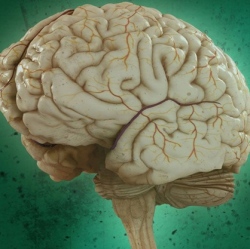
We lack answers to fundamental questions, like what the brain does with most of its energy, or how diseases make neurons in the brain affect each other. An IBM researcher has uncovered what could be a start to these answers: a model for what the brain does at rest. Neuroscientist James Kozloski calls it “the Grand Loop."
"The brain consumes a great amount of energy doing nothing. It’s a great mystery of neuroscience,” Kozloski said. "You don’t spend that much energy on noise unless there’s a really good reason.”
Kozloski says about 90 percent of the energy consumed by the brain is unaccounted for, which is a considerable amount given that the brain takes 20 percent of the body’s total energy.
He proposes that the brain is actually always looping signals through a series of pathways in the brain, made of neurons and tissue. Kozloski says these pathways are like city streets, and the brain is always tracing them, retracing them, and then tracing them again.
The pathways themselves lead through three areas of function in the brain: sensory (what’s happening), behavioral (what can I do about it), and limbic (what does it mean to me).
There are areas of the brain that incorporate new information, but Kozloski credits much of the brain’s energy to these cycling processes. Since the pattern is cyclical, it’s described as a "closed loop,” rather than the traditional way of thinking, that the brain gets inputs from the world and turns that into outputs as bodily interaction.
In order to test this theory, Kozloski ran the model through IBM’s neural tissue simulator, a set of algorithms that mimics the way neurons fire in the brain. While we can see brain activity on fMRIs, this research gives us a better understanding of what’s going on in those scans, and makes it easier to study neurological disease.
Kozloski mentions that from an evolutionary perspective, this could be the mechanisms that humans use to predict what could happen in new situations, drawing from past experiences.
But one immediate application of this knowledge could be towards Huntington’s disease research. Since we now have a theory about how neurons orchestrate their communication, we can look at how neurons physically affect each other, as IBM suspects is the case in Huntington’s.
